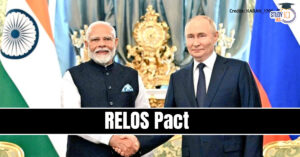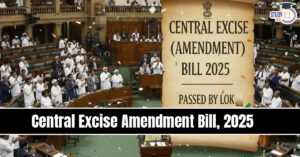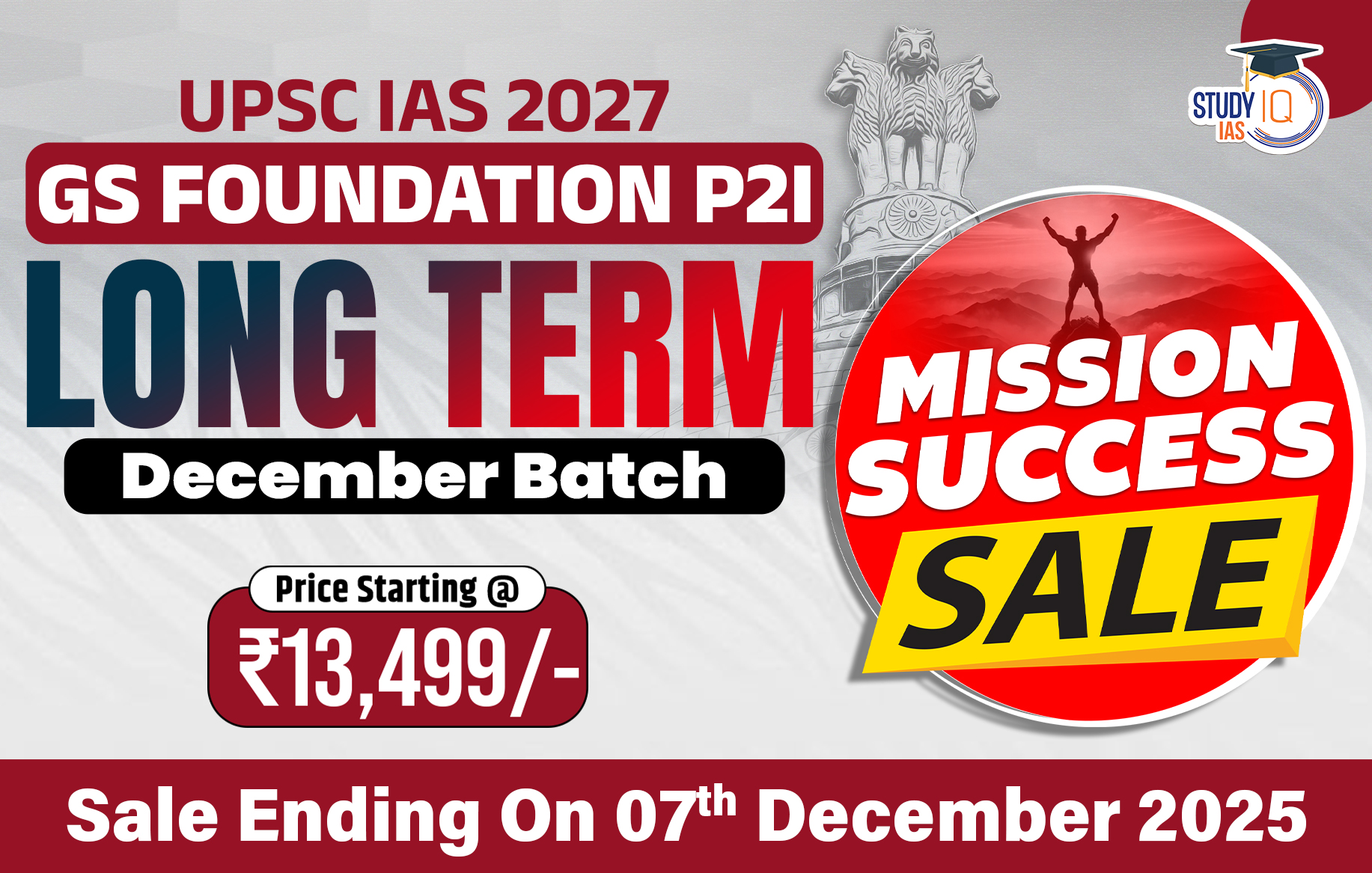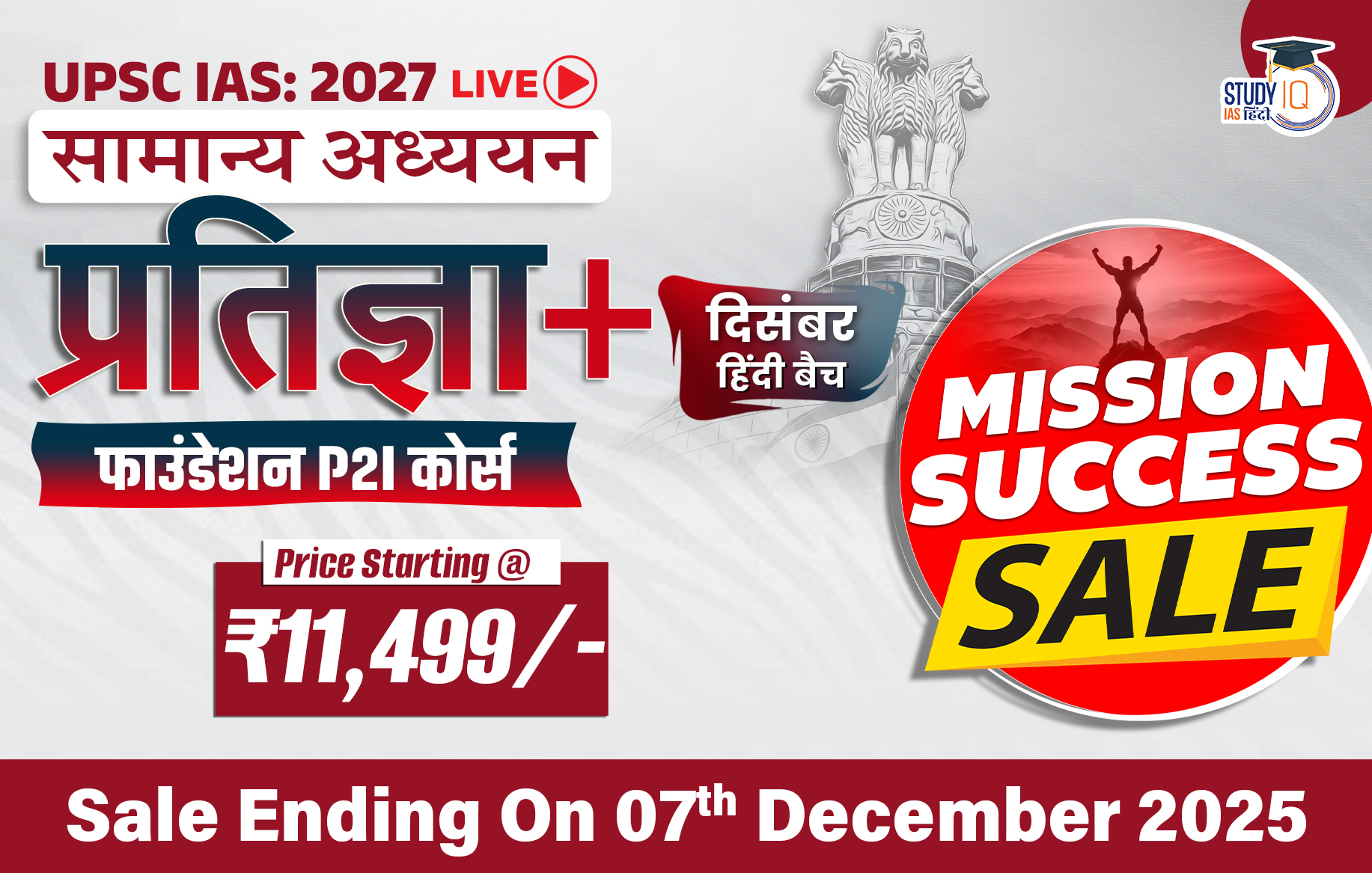Daily Quiz 18 June 2024
Quiz-summary
0 of 5 questions completed
Questions:
- 1
- 2
- 3
- 4
- 5
Information
- Click on – ‘Start Quiz’ button
- Solve Questions
- Click on ‘Next’ button
- Click on ‘Finish Quiz’ button
- Now click on ‘View Questions’ button – here you will see solutions and links.
- The test contains a total of 5 questions.
- Click on the most appropriate option to mark it as your answer.
- You will be awarded Two marks for each correct answer.
- You can change your answer by clicking on some other option.
- A Number list of all questions appears at the top side of the screen.
- You can access the questions in any order by clicking on the question number given on the number list.
- You can use rough sheets while taking the test.
- Do not use calculators, log tables, dictionaries, or any other printed/online reference material during the test.
- Do not click the button “Finish Quiz” before completing the test. A test once submitted cannot be resumed.
You have already completed the quiz before. Hence you can not start it again.
Quiz is loading...
You must sign in or sign up to start the quiz.
You have to finish following quiz, to start this quiz:
- 1
- 2
- 3
- 4
- 5
- Answered
- Review
-
Question 1 of 5
1. Question
1 pointsConsider the following types of Disasters
- Pest attack
- Heat Waves
- Cold Waves
- Frost
- Drought
How many of the above mentioned disasters are notified disasters in the Disaster Management Act, 2005?
Correct
Answer: C
Explanation:
- In India, the Disaster Management Act, 2005, defines a disaster as a “catastrophe, mishap, calamity or grave occurrence” arising from natural or man-made causes that results in substantial loss of life, destruction of property, or damage to the environment.
- The Act includes 12 categories of notified disasters: Cyclone, Drought, Earthquake, Fire, Flood, Tsunami, Hailstorm, Landslide, Avalanche, Cloudburst, Pest attack, Frost and cold waves
- When such an event occurs, the DM Act provisions can be invoked.
- States can draw funds from the National Disaster Response Fund (NDRF) at the national level and the State Disaster Response Fund (SDRF) at the state level.
- States first utilize the SDRF and, if insufficient, seek funds from the NDRF.
- In FY 2023-24, only two states drew money from the NDRF.
- States have requested the inclusion of heatwaves before the last three Finance Commissions.
- The 15th Finance Commission noted the existing list sufficiently covers state needs and did not endorse including heatwaves.
- However, it allowed states to use up to 10% of SDRF funds for “local disasters” like heatwaves, which states could notify independently.
Incorrect
Answer: C
Explanation:
- In India, the Disaster Management Act, 2005, defines a disaster as a “catastrophe, mishap, calamity or grave occurrence” arising from natural or man-made causes that results in substantial loss of life, destruction of property, or damage to the environment.
- The Act includes 12 categories of notified disasters: Cyclone, Drought, Earthquake, Fire, Flood, Tsunami, Hailstorm, Landslide, Avalanche, Cloudburst, Pest attack, Frost and cold waves
- When such an event occurs, the DM Act provisions can be invoked.
- States can draw funds from the National Disaster Response Fund (NDRF) at the national level and the State Disaster Response Fund (SDRF) at the state level.
- States first utilize the SDRF and, if insufficient, seek funds from the NDRF.
- In FY 2023-24, only two states drew money from the NDRF.
- States have requested the inclusion of heatwaves before the last three Finance Commissions.
- The 15th Finance Commission noted the existing list sufficiently covers state needs and did not endorse including heatwaves.
- However, it allowed states to use up to 10% of SDRF funds for “local disasters” like heatwaves, which states could notify independently.
-
Question 2 of 5
2. Question
1 pointsConsider the following statements about Atomic Clocks:
- Atomic clocks utilize the natural vibrations of atoms as their timekeeping element.
- Only four countries, the United States, the United Kingdom, India and Japan have developed their atomic clocks.
- Optical atomic clocks are more accurate than the traditional atomic clocks.
How many of the statements given above are correct?
Correct
Answer: B
Explanation:
- Statement 1 is Correct: An atomic clock is a highly precise timekeeping instrument that utilizes the natural vibrations of atoms to measure time .
- It was invented in 1955 by Louise Essen.
- Atomic clocks maintain precise time by using the consistent frequency of atomic transitions and contain elements like caesium (Cs-133) along with a source of microwave radiation.
- Cs-133 is a highly stable atom, naturally occurring, and commonly used in atomic clocks due to its stability.
- Statement 2 is Incorrect: Currently, only four countries – the United States, the United Kingdom, Japan, and South Korea – have developed their atomic clocks.
- India aims to deploy its own atomic clocks across the nation, to enhance its timekeeping infrastructure and national defence capabilities for the future.
- Currently, India relies on foreign atomic clocks, particularly those in the US.
- Statement 3 is Correct: Optical atomic clocks, which use elements like strontium (Sr) or ytterbium ions and operate at higher frequencies in the optical range (visible, ultraviolet, and infrared light), are even more accurate than traditional atomic clocks.
- It offers enhanced accuracy compared to traditional atomic clocks but are typically larger, more power-consuming, fragile, and expensive.
Incorrect
Answer: B
Explanation:
- Statement 1 is Correct: An atomic clock is a highly precise timekeeping instrument that utilizes the natural vibrations of atoms to measure time .
- It was invented in 1955 by Louise Essen.
- Atomic clocks maintain precise time by using the consistent frequency of atomic transitions and contain elements like caesium (Cs-133) along with a source of microwave radiation.
- Cs-133 is a highly stable atom, naturally occurring, and commonly used in atomic clocks due to its stability.
- Statement 2 is Incorrect: Currently, only four countries – the United States, the United Kingdom, Japan, and South Korea – have developed their atomic clocks.
- India aims to deploy its own atomic clocks across the nation, to enhance its timekeeping infrastructure and national defence capabilities for the future.
- Currently, India relies on foreign atomic clocks, particularly those in the US.
- Statement 3 is Correct: Optical atomic clocks, which use elements like strontium (Sr) or ytterbium ions and operate at higher frequencies in the optical range (visible, ultraviolet, and infrared light), are even more accurate than traditional atomic clocks.
- It offers enhanced accuracy compared to traditional atomic clocks but are typically larger, more power-consuming, fragile, and expensive.
-
Question 3 of 5
3. Question
1 pointsConsider the following statements about Nitrous Oxide
- Commonly known as laughing gas is a colorless, odorless, and non-flammable gas.
- India is the largest global source of nitrous oxide (N2O).
- It is the second most significant greenhouse gas after carbon dioxide.
How many of the statements given above are correct?
Correct
Answer: A
Explanation:
- Statement 1 is Correct: Nitrous oxide, commonly known as laughing gas or happy gas, is a colorless, odorless, and non-flammable gas.
- While nitrous oxide is not flammable, it will support combustion to the same extent as oxygen.
- It leads to a state of euphoria, explaining its nickname, ‘laughing gas.’
- It is soluble in water. Its vapors are heavier than air.
- Applications:
- It is commonly used by dentists and medical professionals to sedate patients undergoing minor medical procedures.
- The gas is also used as a propellant in food aerosols.
- It is used in the automotive industry to enhance engine performance.
- Statement 2 is Incorrect: According to an global assessment published in the journal Earth System Science data, Nitrous Oxide (N2O) emissions grew by 40 percent between 1980 and 2020, with China being the largest emitter, followed by India and the US.
- The top 10 emitters are China, India, the US, Brazil, Russia, Pakistan, Australia, Indonesia, Turkey, and Canada.
- The biggest human sources of N₂O are agriculture, industry, and the burning of forests or agricultural waste.
- 74 percent of the nitrous oxide emissions over the last decade originated from agricultural practices, specifically the use of nitrogen fertilizers and animal manure.
- Statement 3 is Incorrect: Nitrous Oxide (N2O) is the third most significant greenhouse gas after carbon dioxide and methane and is 273 times more potent than CO2 over 100 years.
Incorrect
Answer: A
Explanation:
- Statement 1 is Correct: Nitrous oxide, commonly known as laughing gas or happy gas, is a colorless, odorless, and non-flammable gas.
- While nitrous oxide is not flammable, it will support combustion to the same extent as oxygen.
- It leads to a state of euphoria, explaining its nickname, ‘laughing gas.’
- It is soluble in water. Its vapors are heavier than air.
- Applications:
- It is commonly used by dentists and medical professionals to sedate patients undergoing minor medical procedures.
- The gas is also used as a propellant in food aerosols.
- It is used in the automotive industry to enhance engine performance.
- Statement 2 is Incorrect: According to an global assessment published in the journal Earth System Science data, Nitrous Oxide (N2O) emissions grew by 40 percent between 1980 and 2020, with China being the largest emitter, followed by India and the US.
- The top 10 emitters are China, India, the US, Brazil, Russia, Pakistan, Australia, Indonesia, Turkey, and Canada.
- The biggest human sources of N₂O are agriculture, industry, and the burning of forests or agricultural waste.
- 74 percent of the nitrous oxide emissions over the last decade originated from agricultural practices, specifically the use of nitrogen fertilizers and animal manure.
- Statement 3 is Incorrect: Nitrous Oxide (N2O) is the third most significant greenhouse gas after carbon dioxide and methane and is 273 times more potent than CO2 over 100 years.
-
Question 4 of 5
4. Question
1 pointsConsider the following statements:
- Governor of the state can pardon a death sentence.
- Unlike the President, the pardoning power of the Governor is subject to judicial review.
- There is no formal statutory procedure for handling mercy petitions.
How many of the statements above are correct?
Correct
Answer: A
Explanation:
- Statement 1 is Incorrect: In India, a mercy petition to the President is the last constitutional recourse for a convict sentenced by a court of law.
- A mercy petition is a formal request by an individual sentenced to death or imprisonment, seeking clemency from the President or the Governor.
- The concept of mercy petitions is observed in many countries, including the United States, the United Kingdom, Canada, and India.
- Article 72: Presidential Powers
- The President has the authority to grant pardons, reprieves, respites, or remissions of punishment, or to suspend, remit, or commute sentences for any person convicted of an offence:
- In cases where the sentence is imposed by a Court Martial.
- For offences against laws within the executive power of the Union.
- In cases where the sentence is a death sentence.
- Article 161: Governor’s Powers:
- The Governor of a State has the power to grant pardons, reprieves, respites, or remissions of punishment, or to suspend, remit, or commute sentences for any person convicted of an offence against state laws.
- The President’s power to grant pardon extends to the cases where the sentence or punishment has been awarded by a Court Martial, but the Governor’s power prescribed doesn’t provide so.
- The President can grant pardon in all cases, including the death sentence, but the pardoning power of the Governor doesn’t extend to death sentence.
- The President has the authority to grant pardons, reprieves, respites, or remissions of punishment, or to suspend, remit, or commute sentences for any person convicted of an offence:
- Statement 2 is Incorrect: The Supreme Court ruled that the Governor of a State can pardon prisoners, including those on death row, even before they have served a minimum of 14 years of their prison sentence.
- Epuru Sudhakar & Anr. v. Government of Andhra Pradesh (2006): The SC held that the power of the President and Governor under Article 72 and Article 161 is subject to judicial review.
- Statement 3 is Correct: There is no statutory procedure for submitting or deciding a mercy petition. There is little literature available in the form of guidelines released by the Ministry of Home Affairs and jail manuals of different states.
- A mercy petition is a formal request by an individual sentenced to death or imprisonment, seeking clemency from the President or the Governor.
Incorrect
Answer: A
Explanation:
- Statement 1 is Incorrect: In India, a mercy petition to the President is the last constitutional recourse for a convict sentenced by a court of law.
- A mercy petition is a formal request by an individual sentenced to death or imprisonment, seeking clemency from the President or the Governor.
- The concept of mercy petitions is observed in many countries, including the United States, the United Kingdom, Canada, and India.
- Article 72: Presidential Powers
- The President has the authority to grant pardons, reprieves, respites, or remissions of punishment, or to suspend, remit, or commute sentences for any person convicted of an offence:
- In cases where the sentence is imposed by a Court Martial.
- For offences against laws within the executive power of the Union.
- In cases where the sentence is a death sentence.
- Article 161: Governor’s Powers:
- The Governor of a State has the power to grant pardons, reprieves, respites, or remissions of punishment, or to suspend, remit, or commute sentences for any person convicted of an offence against state laws.
- The President’s power to grant pardon extends to the cases where the sentence or punishment has been awarded by a Court Martial, but the Governor’s power prescribed doesn’t provide so.
- The President can grant pardon in all cases, including the death sentence, but the pardoning power of the Governor doesn’t extend to death sentence.
- The President has the authority to grant pardons, reprieves, respites, or remissions of punishment, or to suspend, remit, or commute sentences for any person convicted of an offence:
- Statement 2 is Incorrect: The Supreme Court ruled that the Governor of a State can pardon prisoners, including those on death row, even before they have served a minimum of 14 years of their prison sentence.
- Epuru Sudhakar & Anr. v. Government of Andhra Pradesh (2006): The SC held that the power of the President and Governor under Article 72 and Article 161 is subject to judicial review.
- Statement 3 is Correct: There is no statutory procedure for submitting or deciding a mercy petition. There is little literature available in the form of guidelines released by the Ministry of Home Affairs and jail manuals of different states.
- A mercy petition is a formal request by an individual sentenced to death or imprisonment, seeking clemency from the President or the Governor.
-
Question 5 of 5
5. Question
1 pointsWith reference to Digital Payments Intelligence Platform, consider the following statements:
- It is an initiative by the Security Exchange Board of India (SEBI).
- It includes an auto replenishment facility for National Common Mobility Card (NCMC), Fastag and UPI lite wallets under the e-mandate framework.
Which of the statements given above is/are correct?
Correct
Answer: B
Explanation:
- Statement 1 is Incorrect: The Reserve Bank of India (RBI) is going to establish a Digital Payments Intelligence Platform which aims at enhancing security across the digital payments ecosystem by enabling network-level data sharing and intelligence.
- Statement 2 is Correct: The RBI has announced the inclusion of auto replenishment facility for Fastag, National Common Mobility Card (NCMC), and Unified Payments Interface (UPI) Lite wallets, under the e-mandate framework.
- This will be activated when balances in Fastag or NCMC drop below a customer-set threshold.
- The RBI plans to remove the requirement for a pre-debit notification 24 hours before an actual debit for automatic replenishments.
- UPI Lite will be included in the e-mandate framework, allowing automatic wallet reloads when the balance falls below a set threshold. This is aimed at facilitating smaller transactions without additional authentication.
- A committee chaired by A.P. Hota has been formed by the Reserve Bank of India (RBI) to investigate the various aspects of creating this digital public infrastructure.
- The committee is expected to provide its recommendations within two months.
Incorrect
Answer: B
Explanation:
- Statement 1 is Incorrect: The Reserve Bank of India (RBI) is going to establish a Digital Payments Intelligence Platform which aims at enhancing security across the digital payments ecosystem by enabling network-level data sharing and intelligence.
- Statement 2 is Correct: The RBI has announced the inclusion of auto replenishment facility for Fastag, National Common Mobility Card (NCMC), and Unified Payments Interface (UPI) Lite wallets, under the e-mandate framework.
- This will be activated when balances in Fastag or NCMC drop below a customer-set threshold.
- The RBI plans to remove the requirement for a pre-debit notification 24 hours before an actual debit for automatic replenishments.
- UPI Lite will be included in the e-mandate framework, allowing automatic wallet reloads when the balance falls below a set threshold. This is aimed at facilitating smaller transactions without additional authentication.
- A committee chaired by A.P. Hota has been formed by the Reserve Bank of India (RBI) to investigate the various aspects of creating this digital public infrastructure.
- The committee is expected to provide its recommendations within two months.
Results
0 of 5 questions answered correctly
Your time:
Time has elapsed
You have reached 0 of 0 points, (0)
| Average score |
|
| Your score |
|
Categories
- Not categorized 0%
| Pos. | Name | Entered on | Points | Result |
|---|---|---|---|---|
| Table is loading | ||||
| No data available | ||||
Sharing is caring!

 Rethinking Urban Governance in India
Rethinking Urban Governance in India
 RELOS Pact Signed: India-Russia Logistic...
RELOS Pact Signed: India-Russia Logistic...
 Central Excise (Amendment) Bill 2025: Ci...
Central Excise (Amendment) Bill 2025: Ci...

























